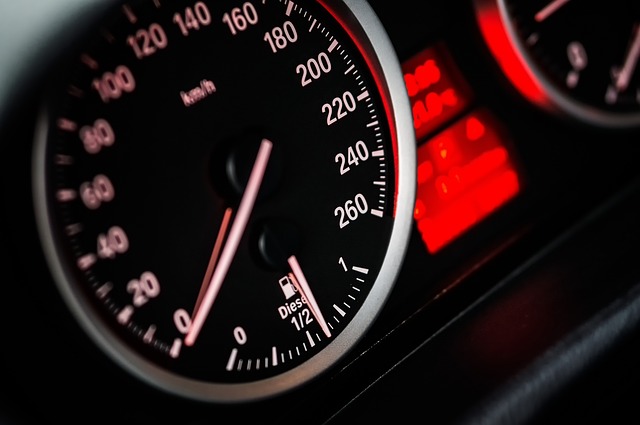Looking to register your car in California? This comprehensive guide walks you through the process, from understanding key requirements to obtaining your registration papers. We’ll cover everything from gathering essential documents to navigating the DMV and even performing a crucial dmv VIN verification step. By following these simple steps, you’ll be cruising down California’s roads legally and with peace of mind in no time.
- Understand California Vehicle Registration Requirements
- Gather Necessary Documents for Car Registration
- Visit the DMV: Steps for Vehicle Registration
- Perform VIN Verification: Checking Your Vehicle's History
- Finalize and Obtain Your California Registration Papers
Understand California Vehicle Registration Requirements

Before registering your car in California, it’s crucial to understand the state’s specific requirements. The California Department of Motor Vehicles (DMV) mandates that all vehicles operated within the state be properly registered and display current license plates. One key step in this process is completing a Vehicle Identification Number (VIN) verification, which ensures the vehicle’s authenticity and helps prevent fraud. This verification typically involves a mobile vin inspection or using a reliable vin verifier to cross-reference the provided VIN with state records.
Additionally, you’ll need to gather essential documents such as proof of ownership, current insurance, and possibly a completed title transfer if applicable. These documents must be presented during the registration process at your local DMV office. By adhering to these requirements, including the dmv vin verification, you’ll ensure a smooth car registration experience in California.
Gather Necessary Documents for Car Registration

Before you begin the registration process, make sure you have all the required documents ready. In California, the Department of Motor Vehicles (DMV) requires a variety of information to ensure a smooth car registration experience. One crucial document is the Vehicle Identification Number (VIN) verification report. This can be obtained through a mobile vin verifier or by conducting a vin inspection. The VIN is a unique code that identifies your vehicle, and it’s essential for verifying its authenticity and history.
Additionally, you’ll need to provide proof of insurance, which showcases your financial responsibility in case of an accident. Other necessary documents include your driver’s license, proof of residency (such as a utility bill or lease agreement), and the odometer reading from your vehicle. Having these documents readily available will expedite the registration process at the DMV.
Visit the DMV: Steps for Vehicle Registration

To begin the car registration process in California, the first step is to visit a local Department of Motor Vehicles (DMV) office. Bring all necessary documentation, including your vehicle’s title, proof of insurance, and valid identification with you. A DMV representative will guide you through the application process, which includes verifying your vehicle’s identity using its unique Vehicle Identification Number (VIN). This vin verification is a crucial step in ensuring accurate registration and tracking information.
You may opt for a mobile vin inspection or visit a DMV location to complete this process. Regardless of your choice, ensuring your car’s VIN is accurately recorded is essential, as it facilitates future transactions, including vehicle history reports and potential insurance claims.
Perform VIN Verification: Checking Your Vehicle's History

Before registering your car in California, it’s crucial to perform a Vehicle Identification Number (VIN) verification to ensure the vehicle’s history is clear and accurate. This process involves checking the vehicle’s unique VIN against national databases to uncover any hidden issues or previous ownership details. You can complete this step at most DMV locations or opt for convenient alternatives like mobile vin verification services, which offer a quick and efficient vin inspection right from your smartphone.
A mobile vin verifier can significantly streamline the registration process by providing immediate access to detailed vehicle history reports. This is especially beneficial in California, where a high volume of vehicles makes traditional DMV procedures time-consuming. By verifying the VIN early on, you can avoid potential delays or surprises later and ensure a smooth car registration experience.
Finalize and Obtain Your California Registration Papers

After completing your California vehicle registration application, it’s time to finalize and obtain your official registration papers. This process involves a crucial step known as DMV VIN verification. You’ll need to ensure that your vehicle’s unique Vehicle Identification Number (VIN) is accurately reflected on the registration documents. A mobile VIN verifier can be an efficient tool for this purpose, allowing you to conduct a quick and convenient VIN inspection right from your location.
By utilizing these mobile vin verification services, you simplify the process of ensuring your car’s registration accuracy. This step is essential as it not only confirms ownership but also plays a vital role in maintaining California’s vehicle record integrity. With a valid and accurate registration, you can legally operate your vehicle on California roads, enjoying the convenience and peace of mind that comes with compliance.
Registering a car in California is a straightforward process that involves understanding local requirements, gathering essential documents, and visiting the DMV. By following these steps, from verifying your Vehicle Identification Number (VIN) to obtaining your registration papers, you’ll have your vehicle legally registered in no time. Remember to always check the California DMV’s official guidelines for any updates or changes to ensure a smooth registration experience.



